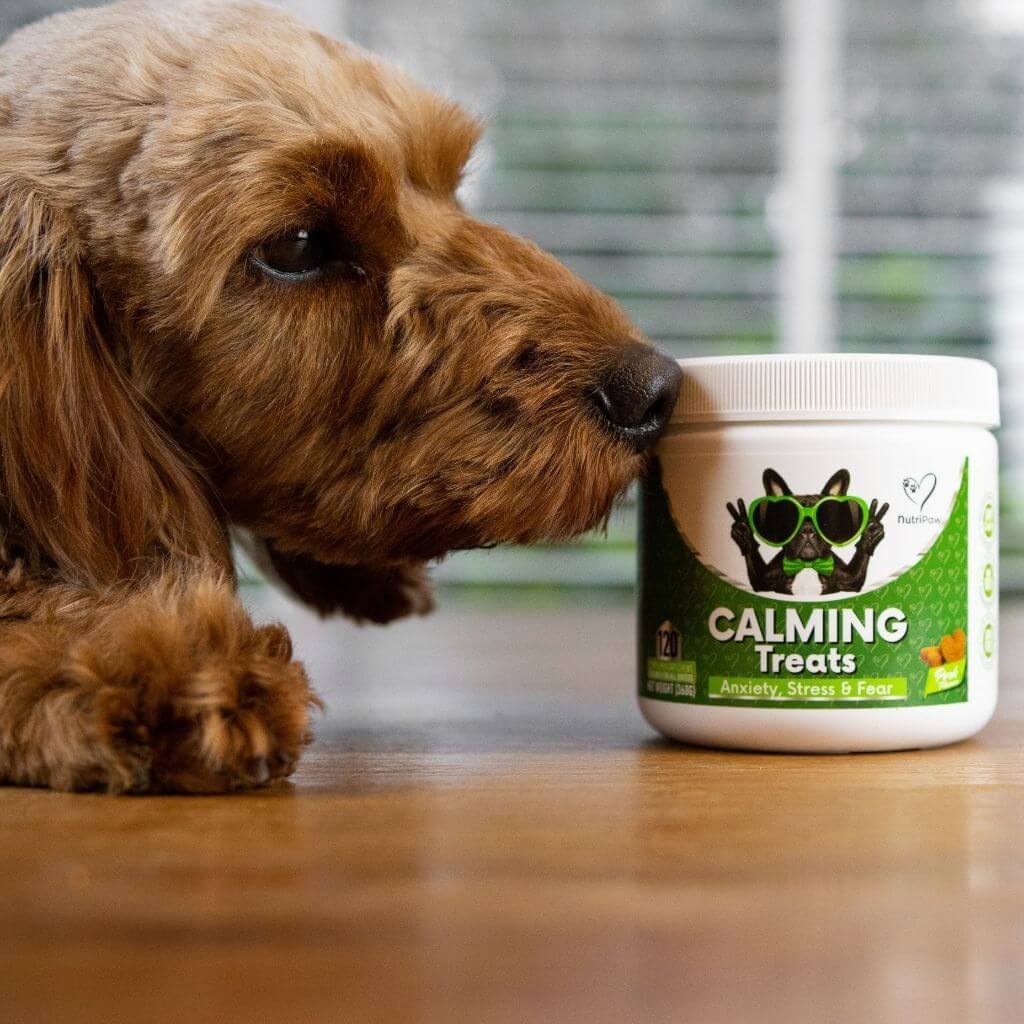
Every pet owner wants their pets to be happy and healthy. Dogs, like people, can, nonetheless, experience worry and tension. This can take many forms, including excessive barking and destructive behavior, as well as hiding or shaking.
This article will help you know about dog anxiety, why it’s vital to address it, and how soothing treats, like the best CBD treats for dogs, can help the pups feel peaceful and content. Let’s find out!
Understanding Dog Anxiety

Many causes contribute to dog nervousness. When separated from their owners or in unexpected surroundings, some dogs become frightened. Medical issues might also trigger anxiety. Pet owners should be mindful of indicators of worry in their pets, such as panting, pacing, trembling, and excessive drooling.
When dogs are stressed, they may retreat from people or become more noisy or destructive. To detect indicators of nervousness in their dog, owners must first understand their dog’s behavior patterns.
Anxiety can also be learned by repeatedly exposing oneself to unpleasant situations that do not provide positive reward. Calming treats, behavioral modification, or medication can all be used. To help their pets live happy, stress-free lives, pet owners should address anxiety in a timely and caring manner.
The Benefits Of Dog Calming Treats

There are many ways to treat dog anxiety.
Anxious dogs may display a range of undesirable behaviors such as barking, whining, and destructive chewing. Calming treats can enhance these behaviors and foster a more happy atmosphere by reducing anxiety levels.
Calming treats may be utilized in a number of scenarios, whether your dog suffers from separation anxiety or is terrified of loud noises like thunderstorms or fireworks. They can be used before a stressful occasion or on a regular basis to assist control persistent anxiety.
Unlike some other anxiety therapies, such as medicine or behavioral change, soothing snacks are simple to use. They may be given as a treat or mixed into your dog’s food, making them a handy and stress-free solution for both pet owners and their canine companions.
The majority of dog soothing treats are manufactured with natural ingredients and are typically safe and well-tolerated by dogs. However, as with any new supplement or prescription, you should contact your veterinarian before beginning a new treatment program for your dog.
Ingredients To Look For In Dog Calming Treats

If you want to use dog relaxing treats to help your furry friend deal with worry, it’s important to know what to look for when choosing a product. Here are some ingredients widely found in dog relaxing treats that have been shown to have calming and healing effects:
Valerian root is another natural product that has calming qualities and can help dogs feel calmer. L-theanine, an amino acid found in green tea, can have a calming effect on the brain and help lower stress and worry in dogs without making them sleepy.
Passionflower, a natural herb that has been used for hundreds of years, can be especially helpful for dogs with separation anxiety. Melatonin is a hormone that the body makes naturally that controls when we sleep and wake up. It can help dogs calm down and feel less anxious, especially before bedtime or during stressful events.
Finally, CBD, a non-psychoactive compound found in hemp and marijuana plants, has relaxing properties and can help reduce anxiety and induce calmness in dogs. When choosing a dog-calming treat, make sure to look for high-quality ingredients and avoid artificial additives and fillers. Always follow the manufacturer’s recommended dosage guidelines and consult with your veterinarian before starting your dog on a new supplement or medication.
Conclusion
To help dogs with their anxiety, it’s important to know what makes them nervous and what signs to look for. Separation from their masters or being in a new place can cause fear, as can health problems. Some signs of worry are drooling, sweating, pacing, and shaking a lot.
Dogs that are stressed out may act differently, like being more damaging or loud. To spot signs of nervousness in a dog, it’s important to know how it usually acts. Repeatedly putting a dog in bad situations without giving them anything good can also make them anxious, which makes it harder to handle in the long run.








